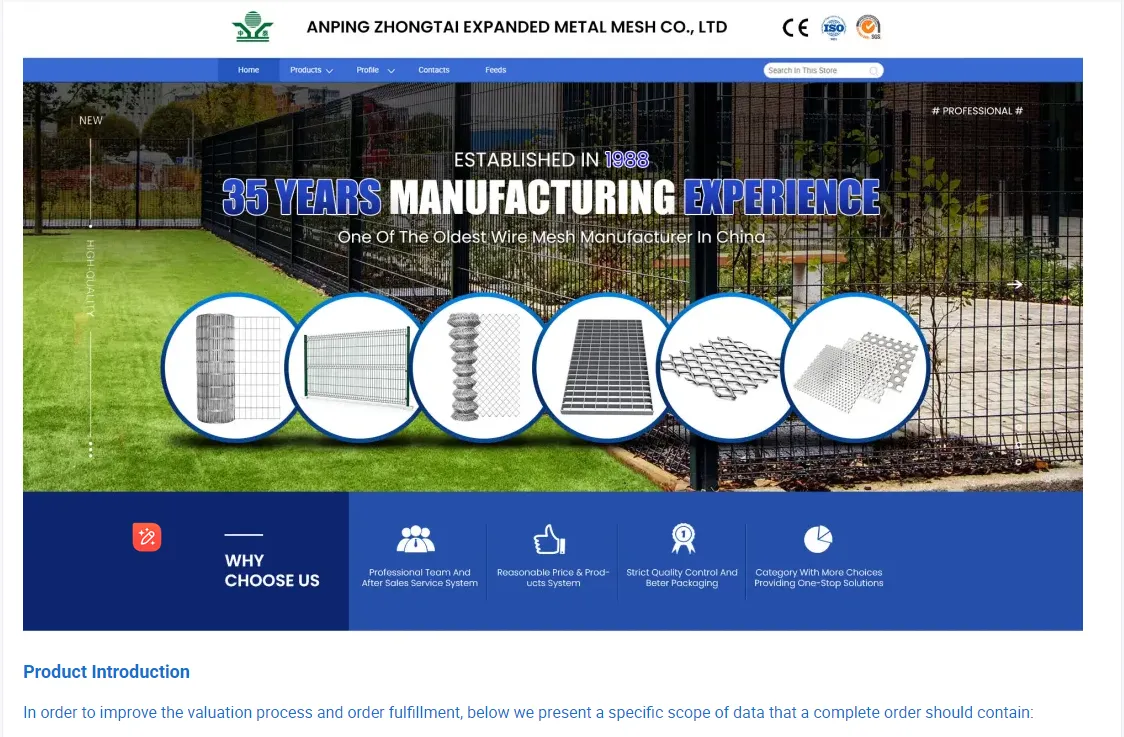The Versatility and Appeal of Decorative Perforated Panels
In contemporary architecture and design, the quest for aesthetic appeal and functionality often leads designers to innovative materials. Among these, decorative perforated panels have emerged as a popular choice, marrying practicality with artistic expression. These panels not only serve structural purposes but also enhance the visual dynamics of both interior and exterior spaces.
What are Decorative Perforated Panels?
Decorative perforated panels are composed of various materials including metal, wood, plastic, and composites. The defining characteristic of these panels is the array of holes or patterns that are strategically created through laser cutting, punching, or drilling. The design possibilities are virtually endless; from intricate geometric patterns to organic shapes, these panels can be customized to suit unique design themes and needs.
The Aesthetic Appeal
One of the standout features of decorative perforated panels is their ability to enrich the visual texture of a space. By playing with light and shadow, they can create dynamic environments. For instance, sunlight filtering through perforated patterns can cast beautiful shadows, altering the ambiance throughout the day. This interplay not only serves a decorative function but also adds depth and dimension to otherwise flat surfaces.
Using perforated panels in a design can also ensure that a space resonates well with its surrounding context. Whether it's a modern urban setting or a tranquil suburban landscape, designers can utilize these panels to blend the architecture with the local environment. For example, using nature-inspired motifs or colors can harmonize a building with its natural surroundings, creating a seamless transition between the built environment and the landscape.
Functional Benefits
Beyond aesthetics, decorative perforated panels offer numerous functional advantages. One of the primary benefits is their ability to manage sound. In bustling urban locales, noise pollution can be a significant concern. Perforated panels can help diffuse sound, making interiors more pleasant without compromising ventilation or visibility.
Additionally, they allow for effective airflow while providing shade. This feature is especially valuable in hot climates where overheating can be a concern. By strategically placing perforated panels, buildings can maintain a cooler temperature without sacrificing natural light—an essential aspect of any well-designed space.
decorative perforated panels

Moreover, these panels can serve as privacy screens. In residential areas, decorative perforated panels can shield private outdoor spaces from prying eyes while still allowing light and air to flow. This dual functionality makes them an attractive alternative to traditional fencing and walls.
Sustainability
In today’s eco-conscious world, the sustainability of materials is a growing consideration in design. Many manufacturers of decorative perforated panels prioritize sustainability by using recyclable materials or adopting energy-efficient manufacturing processes. Additionally, the ability to use these panels in lieu of solid materials can contribute to lighter structures, potentially reducing the overall environmental impact of a building.
Designers can also opt for panels that incorporate green technologies. For example, perforated panels can be designed to support living walls or integrate solar cells, further enhancing their functionality and sustainability.
Applications Across Sectors
The versatility of decorative perforated panels allows for their application in various sectors. In commercial environments, they can be utilized to create eye-catching facades that enhance brand identity while serving the practical purpose of solar control. Similarly, in public spaces, these panels can provide artistic focal points and shelter in parks, transit stations, and other communal areas.
In residential design, homeowners are increasingly exploring decorative perforated panels as an option for feature walls, room dividers, and even outdoor patios. Their uniqueness allows individuals to express personal style while maintaining the practical aspects of space management.
Conclusion
Decorative perforated panels are more than just a trend; they represent a fusion of creativity and practicality in design. With their ability to transform spaces through aesthetic appeal, functional enhancements, and sustainable practices, they are set to become a staple in modern architecture. As designers continue to explore the potential of these innovative materials, we can expect to see even more exciting applications and designs that push the boundaries of conventional architecture. Whether you’re an architect, a designer, or simply an enthusiast of beautiful spaces, the impact of decorative perforated panels on contemporary design cannot be overstated.
-
The Best Metal Mesh Solutions: Expanded Aluminum Metal vs. Expanded Stainless Steel Metal
NewsSep.10,2024
-
Round Perforated Sheets vs. Hexagonal Perforated Sheets vs. Embossed Perforated Sheet Metal
NewsSep.10,2024
-
Perforated Metal Sheets
NewsSep.10,2024
-
Experience The Excellence Of Stainless Steel Grating
NewsSep.10,2024
-
Discover the Versatility Of Metal Mesh Expanded Forming Machines
NewsSep.10,2024
-
Discover The Advantages Of Steel Grating For Sale
NewsSep.10,2024
Subscribe now!
Stay up to date with the latest on Fry Steeland industry news.

